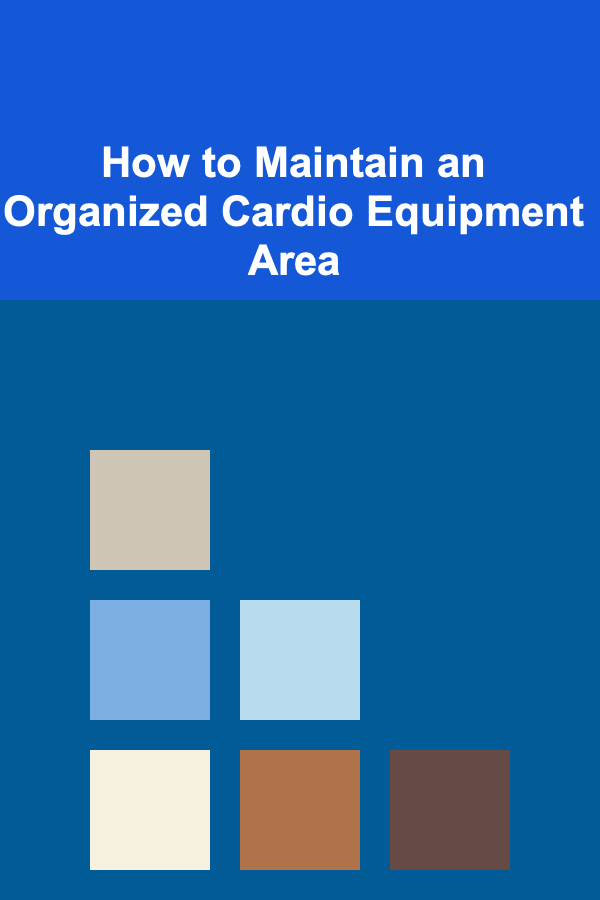
10 Tips for Content Writers to Write Compelling Headlines
ebook include PDF & Audio bundle (Micro Guide)
$12.99$5.99
Limited Time Offer! Order within the next:

In the digital age, content is king, but it's only through compelling headlines that your content gets noticed. A great headline can be the difference between a reader clicking on your article or scrolling past it. With millions of pieces of content published every day, capturing attention is more crucial than ever. Headlines are often the first (and sometimes the only) impression you make on a potential reader, so learning how to craft a headline that entices, informs, and sparks curiosity is an invaluable skill.
But what makes a headline truly compelling? What does it take to write a headline that not only grabs attention but also encourages people to dive into the content? In this article, we'll explore 10 essential tips that can help content writers write compelling, clickable headlines that drive engagement and results.
Use Numbers to Spark Curiosity and Add Clarity
One of the simplest and most effective ways to create a compelling headline is by using numbers. Whether it's a "listicle" or a numerical value that sets the stage for your content, numbers provide a sense of structure and expectation. People are naturally drawn to numbers because they promise digestible, easy-to-follow information.
For example:
- "10 Tips for Effective Content Marketing"
- "5 Steps to Mastering Social Media"
- "7 Ways to Boost Your Productivity"
Numbers make your headline more specific and give readers a clear idea of what they can expect. Additionally, headlines with numbers often perform well in search engine results, as they are perceived to be organized and easy to skim.
Why It Works:
- Numbers give structure and promise value.
- They break content into easy-to-digest chunks.
- They set clear expectations for the reader.
Ask a Question to Engage Readers
Questions naturally spark curiosity. They make readers stop and think, often prompting them to click through to find the answer. Asking a question in your headline is a great way to get people involved right from the start, as they are intrigued by the challenge of finding the solution.
For example:
- "Are You Making These Common SEO Mistakes?"
- "What's the Secret to Effective Email Marketing?"
- "How Can You Improve Your Content in Just 30 Days?"
By asking a question, you're not just presenting a topic --- you're offering to solve a problem or provide insights that matter to your audience. The key is to ensure that the question is relevant to the audience's interests or pain points.
Why It Works:
- It generates curiosity and invites readers to find out more.
- It engages the audience by making them think about their own experiences.
- It positions your content as the answer to a problem.
Incorporate Power Words to Evoke Emotion
Power words are carefully chosen words that are emotionally charged and designed to provoke a response from the reader. They can invoke excitement, urgency, or curiosity, making your headline more irresistible. Whether it's the promise of something "ultimate," "secret," "guaranteed," or "proven," power words create an emotional trigger that encourages readers to click.
For example:
- "The Ultimate Guide to Personal Finance Success"
- "Unlock the Secrets of Effective Content Marketing"
- "Discover Proven Strategies for Boosting Sales"
The right power word can transform a bland headline into something that sparks immediate interest and urgency.
Why It Works:
- Power words evoke emotional responses, making headlines more persuasive.
- They convey a sense of value, exclusivity, or success.
- They create a sense of urgency or promise that compels action.
Use Strong Adjectives to Enhance Appeal
Adjectives play a key role in making your headline more descriptive and enticing. Words like "amazing," "essential," "incredible," and "unbelievable" add emphasis and help create an impression of high value. A well-chosen adjective can significantly increase the impact of your headline and make it stand out.
For example:
- "10 Incredible Tips for Writing Engaging Content"
- "The Essential Guide to Building a Brand"
- "5 Simple Ways to Boost Your Online Presence"
Using strong adjectives helps clarify the benefit or value of the content, attracting readers who are looking for specific results or improvements.
Why It Works:
- Strong adjectives make your headline more appealing and eye-catching.
- They emphasize the importance or uniqueness of the content.
- They attract readers seeking solutions or improvements.
Appeal to Your Reader's Needs or Pain Points
One of the most powerful techniques in headline writing is to directly address your reader's needs, desires, or problems. When you frame your headline in a way that speaks to a challenge or desire, you immediately connect with your audience. This approach positions your content as the solution they've been looking for.
For example:
- "How to Build a Successful Business from Scratch"
- "Overcome Writer's Block with These Simple Strategies"
- "Fix Your Sleep Schedule in Just 7 Days"
By identifying what your audience needs or struggles with, you provide a compelling reason for them to read your content.
Why It Works:
- It positions your content as a solution to a specific problem.
- It immediately grabs the attention of readers who relate to the pain point.
- It shows empathy by understanding your audience's challenges.
Create a Sense of Urgency
Urgency can be a game-changer in headline writing. When you present something as timely, limited, or time-sensitive, you compel readers to act quickly. Whether it's a limited-time offer, breaking news, or seasonal content, urgency encourages readers to click immediately to avoid missing out.
For example:
- "Act Now: 10 Limited-Time Discounts You Can't Miss!"
- "Only 3 Days Left to Register for Our Free Webinar!"
- "Don't Wait---Start Your Fitness Journey Today!"
Urgency works because it taps into the fear of missing out (FOMO), pushing people to take action rather than procrastinate.
Why It Works:
- It creates a feeling of time pressure, motivating immediate action.
- It encourages readers to act before the opportunity passes.
- It makes the content seem more valuable or exclusive.
Keep It Simple and Concise
While it's tempting to make your headline as elaborate as possible, simplicity often reigns supreme. Readers are often scanning content quickly, and if your headline is too wordy or complicated, they may lose interest before they even click. A concise headline can communicate the key idea without overwhelming the reader.
For example:
- "How to Build a Website"
- "Master the Art of Public Speaking"
- "Achieve Financial Freedom in 5 Steps"
Short and to-the-point headlines are often more effective because they deliver the message clearly and quickly. Aim for clarity over complexity to ensure your audience immediately understands the value of your content.
Why It Works:
- A concise headline is easier to scan and understand.
- It grabs attention without overwhelming the reader.
- It works well across all platforms, especially in mobile environments.
Incorporate Keywords for SEO
For a headline to be compelling, it must also be discoverable. One of the most important aspects of writing a headline is ensuring it is optimized for search engines. By including relevant keywords in your headline, you increase the likelihood that your content will appear in search results when users query related topics.
For example:
- "SEO Tips for Beginners"
- "How to Write Compelling Blog Posts That Rank"
- "The Best Digital Marketing Strategies for 2025"
SEO-friendly headlines not only attract organic traffic but also signal to search engines that your content is relevant to what people are searching for. A well-optimized headline is a powerful tool for increasing visibility and engagement.
Why It Works:
- It helps your content rank higher in search engine results.
- It ensures your headline is aligned with what your target audience is searching for.
- It drives organic traffic to your content, increasing exposure.
Test and Refine Your Headlines
Even the best writers can benefit from testing their headlines. A headline that may seem perfect at first glance might not resonate as well as expected. By using A/B testing, you can experiment with different headline variations to see which performs best with your audience. Small tweaks, such as changing a word or adjusting the order, can sometimes lead to a significant increase in clicks.
For example:
- "How to Grow Your Email List" vs. "The Ultimate Guide to Growing Your Email List"
- "Boost Your Productivity with These Tips" vs. "5 Ways to Maximize Your Productivity Every Day"
Analyzing the performance of different headlines gives you valuable insights into what captures your audience's attention and helps you refine your headline-writing skills.
Why It Works:
- Testing allows you to measure and optimize your headlines.
- It helps you identify what language or phrasing resonates most with your audience.
- It provides actionable insights to improve future content.
Ensure Consistency with Your Content
A headline should always reflect the content it introduces. While it's tempting to craft attention-grabbing headlines that may exaggerate or promise more than what the content delivers, this can lead to disappointment and a high bounce rate. Misleading headlines can damage your credibility and result in poor user experience. Make sure that the headline accurately represents the value and message of your content.
For example:
- If your article is about budgeting tips, don't use a headline like "Get Rich Quick with These Tips" because it promises something unrealistic.
- If your content is aimed at beginners, don't use overly complex jargon in the headline.
Consistency between your headline and the content will help build trust with your readers, leading to better engagement and retention.
Why It Works:
- It prevents misleading or "clickbait" headlines, which can harm your reputation.
- It ensures readers get exactly what they expect from the content.
- It builds trust and encourages repeat visitors.
Conclusion
Writing compelling headlines is both an art and a science. By combining creativity, psychology, and strategic thinking, content writers can craft headlines that attract attention, spark curiosity, and drive engagement. Using these 10 tips --- from incorporating numbers and power words to testing and refining your headlines --- will give you the tools you need to create irresistible headlines that compel readers to click and read your content. With the right headline, you can ensure your content doesn't just get seen, but also gets the attention it deserves.
Reading More From Our Other Websites
- [Home Maintenance 101] How to Safely Handle and Maintain Your Home's Gas Appliances
- [Home Staging 101] How to Stage a Bathroom: Creating a Spa-like Atmosphere on a Budget
- [Home Lighting 101] How to Use Lighting to Create a Seamless Flow Between Rooms
- [Organization Tip 101] How to Use Accent Chairs to Balance Furniture Layout
- [Gardening 101] The Best Garden Planters for Small Spaces and Urban Gardens
- [Weaving Tip 101] The Intersection of Weaving and Embroidery: Hybrid Projects for Creative Makers
- [Personal Finance Management 101] How to Cut Back on Unnecessary Subscriptions and Save More
- [Home Holiday Decoration 101] How to Decorate Stairs for the Holidays with DIY LED Garland
- [Trail Running Tip 101] Best Compression Sleeves for Reducing Leg Fatigue on Multi‑Day Trail Events
- [Organization Tip 101] How to Manage Your Time While Pursuing Hobbies

Earn Passive Income by Developing Deep Learning-Powered Chatbots
Read More
How to Create a Storage Plan for a Shared Bedroom
Read More
How to Maintain an Organized Cardio Equipment Area
Read More
How to Introduce Board Games to Non-Gamers
Read More
Understanding the Role of Nodes in a Blockchain Network
Read More
10 Tips for Designing Your Own Knitting Patterns
Read MoreOther Products

Earn Passive Income by Developing Deep Learning-Powered Chatbots
Read More
How to Create a Storage Plan for a Shared Bedroom
Read More
How to Maintain an Organized Cardio Equipment Area
Read More
How to Introduce Board Games to Non-Gamers
Read More
Understanding the Role of Nodes in a Blockchain Network
Read More